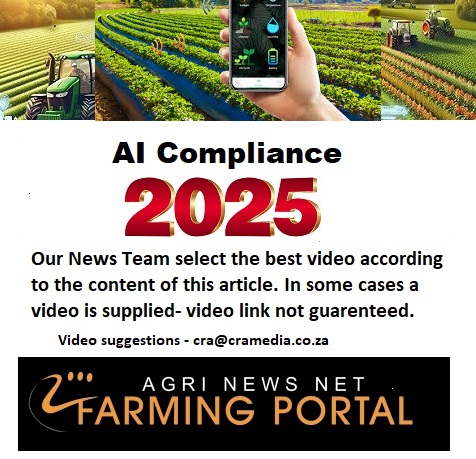Cattle farming plays a crucial role in global food production, contributing significantly to both the dairy and beef industries. In 2024, the European Union led the world in cow milk production, collectively generating over 144 million metric tons, while the United States followed closely with 104 million metric tons.
The global dairy trade remains a multi-billion-dollar industry, with the total export value of dairy products reaching $66 billion in 2023, reinforcing the importance of efficient and sustainable livestock management. Major players such as Dairy Farmers of America, with $23 billion in sales, and Land O’Lakes Inc., generating $16.8 billion, highlight the scale of the industry and the fierce competition within it.
Despite its vast economic significance, cattle farming presents numerous challenges. Farmers face rising operational costs, unpredictable climate conditions, and increasing regulatory demands for sustainability. The question “Is cattle farming profitable?” remains at the forefront of industry discussions, as producers strive to balance economic viability with environmental responsibility. Additionally, concerns about how cattle farming affects the carbon cycle have led to the development of innovative, climate-smart solutions aimed at reducing emissions and improving resource efficiency.
Technology is emerging as a game-changer in addressing these challenges. Advancements in precision livestock farming and cattle farming software are streamlining operations, enhancing herd management, and improving productivity. From automated feeding systems to real-time health monitoring, digital tools are transforming traditional practices, making farming livestock more sustainable and profitable. Smart farming solutions help mitigate challenges in smart livestock farming, offering data-driven insights that empower farmers to optimize their operations with minimal effort.
As the industry evolves, the integration of technology in livestock farming—whether in Australia, Canada, or Europe—is not just an option but a necessity. This article explores how innovations in climate-smart livestock farming and digital agriculture are revolutionizing cattle farming, making it more efficient, profitable, and sustainable for the future.
The Role of Technology in Modern Cattle Farming
The traditional approach to farming livestock is rapidly evolving as digital technologies are introduced to improve efficiency, productivity, and sustainability. With the rising demand for high-quality meat and dairy products, farmers are under pressure to optimize their operations while addressing challenges such as fluctuating feed costs, disease outbreaks, and environmental impact. Precision livestock farming (PLF) is emerging as a transformative solution, integrating advanced technologies such as sensor-based monitoring, automated feeding systems, AI-driven analytics, and IoT-enabled tracking devices to enhance productivity and reduce inefficiencies.
 What’s the real beef over sustainable cattle farming?
What’s the real beef over sustainable cattle farming?
Precision Livestock Farming
1. Automated Health Monitoring & Disease Detection. Livestock health is one of the most significant concerns for farmers, as diseases can quickly spread and cause substantial economic losses. Wearable sensors and smart collars now provide real-time data on vital signs, activity levels, and feeding behavior. AI-powered predictive analytics can detect early signs of illness, allowing for proactive intervention and reducing reliance on antibiotics.
2. Smart Feeding Systems. Optimizing feed consumption is critical to reducing costs and maintaining healthy livestock. Automated feeders equipped with AI-driven algorithms ensure that animals receive the correct amount of nutrients based on their age, weight, and productivity levels. These systems also minimize feed waste and improve overall farm profitability.
3. IoT-Enabled Tracking and Behavioral Analysis. The ability to track movement, grazing patterns, and reproductive cycles through GPS-enabled collars and ear tags has revolutionized livestock management. Farmers can monitor their herds remotely, identifying any unusual behavior that may indicate health issues or breeding opportunities.
4. Robotic Milking and Automated Barn Systems. In the dairy sector, robotic milking systems have significantly reduced labor costs while improving milk quality. These systems use sensors to detect udder health, ensuring that only healthy cows are milked, thus preventing contamination and increasing efficiency. Additionally, automated barn cleaning and climate control systems contribute to healthier living conditions for livestock.
Using Out-of-the-Box Cattle Farming Software
For those looking for a quick and cost-effective solution, off-the-shelf livestock management software provides ready-to-use features. These solutions typically include:
– Basic herd tracking and health management
– Feeding schedules and automation
– Financial and farm operation reporting
– Compliance and traceability tools
The main advantage of this approach is faster implementation and lower initial investment, but it comes with limitations. Since these solutions are pre-built, farmers can only use the features included in the product and may find that certain needs are not fully addressed.
Customizing an Existing Software
A middle-ground solution is choosing an off-the-shelf product and customizing it with the help of tech specialists like Qaltivate. This approach allows farmers to:
– Select a software with a strong foundation
– Modify features to match their farm’s specific needs
– Integrate additional functionalities without developing from scratch
– Ensure seamless compatibility with existing farm systems
Qaltivate specializes in tailoring cattle farming software to fit the exact requirements of agricultural businesses. By working with tech experts, farmers can enhance their chosen software without the costs of a fully custom-built system, gaining the flexibility to add unique features and optimize operations.
Cattle Farming in Canada – Strategies, Profitability, and Software Solutions
Canada’s cattle farming industry is a cornerstone of its agricultural sector, with approximately 10.2 million beef cattle spread across over 60,000 farms nationwide. Producers are continually exploring innovative models to balance productivity with sustainability, ensuring the industry’s growth aligns with environmental stewardship.
















